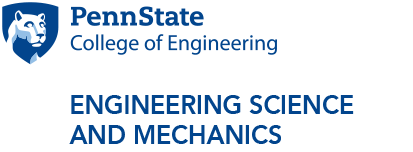Peridynamic models for fracture and damage in heterogeneous materials
Abstract: In this talk I will give an overview of peridynamic (nonlocal) models that have been shown to be very useful in predicting and allowing us to better understand some complex phenomena like fracture, damage, and corrosion. Peridynamic models are particular types of nonlocal models that avoid using spatial derivatives to describe the phenomenon, and, instead, employ integrals making it easy to simulate autonomous evolution of discontinuities, such as cracks in a domain, and autonomous localization of damage into fracture lines. I will focus on some new models for heterogeneous materials that employ nonlocality and stochasticity to predict failure in materials with microstructure, with only minimal information. Nonlocality and stochasticity, in this case, allows us to side-step costly multi-scale modeling, effectively incorporating relevant information about the microstructure and correctly predicting its role on crack growth and failure. I will discuss reasons behind the success of the peridynamic integro-differential formulations in simulating dynamic and quasi-static brittle fracture or corrosion degradation and point out some open problems and potential future applications of peridynamic models.
Bio: Florin Bobaru is currently Professor and Hergenrader Distinguished Scholar of Mechanical and Materials Engineering at the University of Nebraska-Lincoln. He received his B.S. (1995) and M.S (1997) degrees in Mathematics and Mechanics from the University of Bucharest, Romania, and his Ph.D. (2001) degree in Theoretical and Applied Mechanics from Cornell University. Prof. Bobaru is one of the first contributors to peridynamic modelling of fracture and damage and served as the main editor of the “Handbook of Peridynamic Modeling” (2016). He has published extensively on peridynamic modelling of dynamic brittle fracture, fracture in composites, corrosion damage, and thermomechanical fracture. A new book on “Corrosion Damage and Corrosion-Assisted Fracture”, co-authored with Prof. Ziguang Chen and Siavash Jafarzadeh, will be published by Elsevier in 2021.
Additional Information:
For Zoom information and password, please contact Lisa Spicer at lms8@psu.edu
Media Contact: Lisa Spicer



